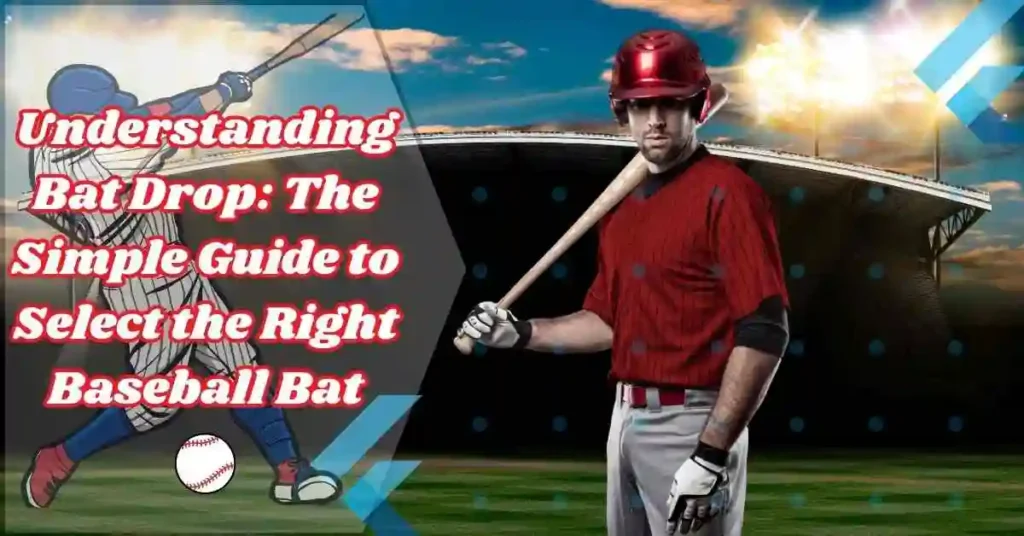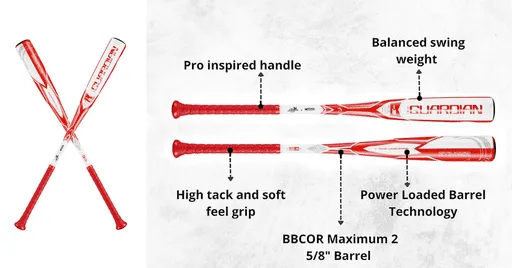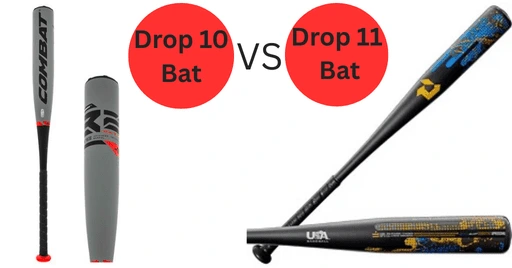
When talking about baseball bats, there is one factor that needs to be kept in mind: the bat drop. But what is a bat drop in baseball, exactly? This measurement affects the weight and swing characteristics of a bat, which can, in turn, impact a player’s performance. Knowing the ins and outs of bat drop is essential if you’re a coach, a parent buying a new bat for your child, or a player looking to get into the details of baseball bats. In this article, we’ll discuss baseball bat drop meaning, how it affects the bats you choose, and how bat drop varies by age group and style of play.
What Does Bat Drop Mean?
Bat drop represents the difference between the length of the bat and its weight, typically represented as a negative value. The length-to-weight ratio is the length (in inches) of the bat minus its weight (in ounces). For example, a drop 10 baseball bat is a bat that weighs 10 ounces less than its length in inches.
Bat drop is essential to understand because it affects how easily or how difficult it is to swing the bat. Because a lower bat drop means a heavier bat, it is harder to swing, but it provides more power. On the other hand, a higher drop bat indicates a lighter bat, which may allow for a quicker swing, but will likely result in a loss of overall power.
What Does Drop 10 Mean on a Baseball Bat?
When you come across drop 10 baseball bats, the bat weighs 10 ounces less than its length in inches. For instance, a drop 10 bat that is 30 inches long would be 20 ounces heavy. This is one of the most common bat drops used by younger players, as it provides a combination of weight and speed.
A drop 10 bat is a popular option for players who need the bat speed to maintain a good swing, while also keeping a manageable weight for control. It is particularly a big deal for younger players who have not yet fully matured in terms of their strength and swinging pattern.
What is a Drop 3 Bat?
This bat weight drop is the standard drop on a bat for high school and college baseball. A drop 3 baseball bat weighs three ounces less than its length in inches. So, a 33-inch-long bat with a drop three would weigh 30 ounces. Most often, these bats are used by advanced players who can control the heavier weight without affecting their swing speed.

The drop 3 bats are the popular choice when players require extra power in their swing, since the heavier weight can add more force behind the ball. But they might be too tricky for younger players to control; that’s why they’re typically found on high school or collegiate teams.
What Does End Loaded Bat Mean?
The trade-off with end-loaded bats is that they are more weighted towards the barrel of the bat, but allow for increased momentum upon contact. Stronger players who already have a well-established mechanic tend to prefer end-loaded bats. The additional weight at the end of the barrel enables a more substantial impact. Still, it can also make the bat a bit more unwieldy to swing quickly, particularly for younger or less experienced hitters.
What Does Drop 11 Mean on a Bat?
Drop 11 bat ( weight in ounces = inches in length – 11 ). For instance, a 28-inch-long drop 11 bat would weigh 17 ounces—the perfect bat for younger players or those who are growing into their strength. An easy-to-swing bat that makes contact is a drop 11 because it weighs less than a drop 10., But much like the drop 10, the trade-off is a little less overall power than with heavier bats.
What is Drop Weight on a Bat?
If you want to get technical, the drop weight on a bat is simply the difference between the bat’s length and its weight, and it has a significant impact on how the bat performs.For players, the drop weight assists in choosing a bat customized for their level of strength and hitting style. The same mechanism is applicable whether you require a drop 10, drop 3, or even a drop 5 baseball bat. The drop weight will help you appreciate how the bat will feel while swinging.
Bat Drop by Age:
Organizations commonly advise bat drop recommendations through age categories but these recommendations can change depending on player strength and skill abilities. Hence for players between 7 to 9 years old drop 10 baseball bats frequently provide the optimal choice while they can advance to baseball bat drop 3. Your child’s size and skill profile determine the perfect baseball bat drop selection for high school and collegiate play since older players demonstrate increased strength.
Drop 10 vs. Drop 11 Bats: Which One Should You Buy?
When it comes to the argument of drop 10 vs drop 11 bats, it all comes down to personal preference and what the players need. A drop 10 bat gives a little more weight and power, and is suitable for players who have developed a bit more strength and control. On the flipside of this, a drop 11 bat is going to be lighter, which, for players looking to maximize swing speed and bat control, can be a huge advantage. There are pros and cons to both, so the best option will vary based on the player’s skill level and goals.

What Does the Negative Number on a Bat Represent?
Negative numbers are around bat drop (and you will see drop 10, drop 3, etc.) One of them is negative, indicating that the bat length is out of proportion to the mass of the bat. A drop 10 bat weighs 10 ounces less than its length in inches. Having a single universal bat drop makes comparisons easier, thus making it convenient for players to choose a bat drop that is best suited for them.
What is a Drop 5 Baseball Bat?
Another commonly used bat is a drop 5 baseball bat, which is often preferred by players who are developing and strengthening. The drop 5 is a bit heavier than either a drop 3 or drop 10 which allows more potential power while still preserving a relatively manageable weight for swing speeds. This is commonly used by players moving from youth baseball to higher levels of play.
Conclusion:
When it comes to baseball, one of the most important aspects is the drop on a baseball bat. The normal world of baseball is where everything needs to go well in order to have a hand in this game. If you’re shopping for a drop 10 baseball bat for a newcomer to the game, or a drop three baseball bat for an upperclassman with more experience under his belt, you’ll make the right call if you understand the differences in the weights and lengths of bats. Knowing about bat drop weight, as well as some additional factors like end-loaded bats, will allow you to choose a bat that suits your playing style and age group, resulting in a better game.
FAQs:
What’s the difference between a baseball bats drop 3 and drop 5 baseball bat?
This means that a drop three bat weighs more than a drop five baseball bat, so a drop five bat is better for younger players who are not strong enough yet and want a lighter bat for quicker swings.
What does the negative number on a bat mean?
The negative number means something on a bat; specifically, it refers to the bat drop, which is the difference between length and weight. For example, a drop 10 bat is 10 ounces lighter than its length in inches.
What is the optimum bat drop for a 12-year-old?
A drop 10 or drop 11 bat should be appropriate for an average 12-year-old of average strength and swing speed.
